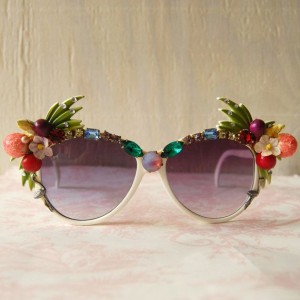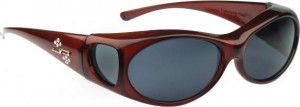4/29/14
May will be here this week, and in Southern California we are looking at bright, sun-filled days with temperatures in the upper 80s and low 90s. This means that thousands will be heading to the beaches or their own backyards to enjoy the warm weather.
Now is the perfect time to review one of the biggest contributing factors to vision loss – sun exposure. And it’s not just about sunglasses, but also brimmed hats.

First let’s talk about sunglasses. There are three things to think about when selecting your sunglasses:
1. Lens tint
2. UV protection
3. Glare
4. Frames
Lens Tint
There is a misconception that the darker your sunglass lens, the better protection for your eyes. No true. The color or darkness of your lens is personal preference and often based on the activity you are doing while wearing sunglasses or the sun conditions. At the beach in bright sunlight you are subject to more reflective light and may prefer dark amber, copper or brown lens, if you are on the ski slopes when the skies are overcast you may prefer yellow or orange lens to increase contrast and fight “flat light.” If you are looking to increase contrast on a partially cloudy day, and if you don’t mind distorted color perception, you might prefer amber or rose lenses.
Other considerations include mirrored sun lenses that can block 10-15% more of the sun’s visible rays, or photochromic lenses that darken automatically when you go outside and then quickly become lighter when you come inside.
UV Protection
While darker lenses don’t offer better eye protection, controlling the UV exposure does. Research has found links that extended exposure to UVA and UVB rays can result in eye damage such as cataracts, photokeratitis and macular degeneration. By wearing sunglasses that block these harmful rays your eyes should remain healthier as you age. Also know that some parts of the country receive more UV rays than others – here is a wonderful chart from The Vision Council to let you see how your location rates.
Glare
Another problem when out in the sun, and especially driving, is glare. Making sure your lenses are polarized is a great help. They work by only letting in specific amounts of light at certain angles and reducing the brightness of that light.
Because I am light sensitive I find I use polarized lenses when I am reading outside is helpful. The reflected light from the page of a book can cause me to squint or fatigue my eyes if I read for a long period of time. The only other option is using a paper-ink e-reader which also helps cut down on glare.
Another way to deal with glare is the use of an anti-reflective (AR) coating on your lenses. It reduces eye stain by preventing light from reflecting off lens surfaces. When applied to the back of your lenses it can help with problems when the sun is behind you or to your side.
Frames
Not all light hits your eyes from directly in front. It can come through the top, sides and bottom of your frames. The smaller the frames, the more unfiltered light makes its way to your eyes. This is where a brimmed hat can help keep the sun coming in from the top while also providing protection for your face.

To provide you with the maximum protection, “fit-over” sunglasses, that you can wear over your regular prescription glasses, are a great idea and more economical. Cocoons Eyewear and Fitovers Eyewear are two of several companies that make them. They filter the light from the top, sides and even below to give you the maximum protection and come in a wide variety of lens colors. It is also nice not to have to get new sunglasses when your eyeglass prescription changes.
Whatever frames you choose make sure they fit properly and will not keep sliding down your nose or fall of when being active. You may even want to purchase a band-style foamed neoprene retainer that attaches at both temples, sometimes known as a gator.
Also remember, it is not just the direct sunlight you need to worry about. Water reflects up to 100% of the harmful UV rays, dry sand and concrete up to 25% and even grass reflects up to 3%.
 Susan DeRemer, CFRE
Susan DeRemer, CFRE
Vice President of Development
Discovery Eye Foundation

